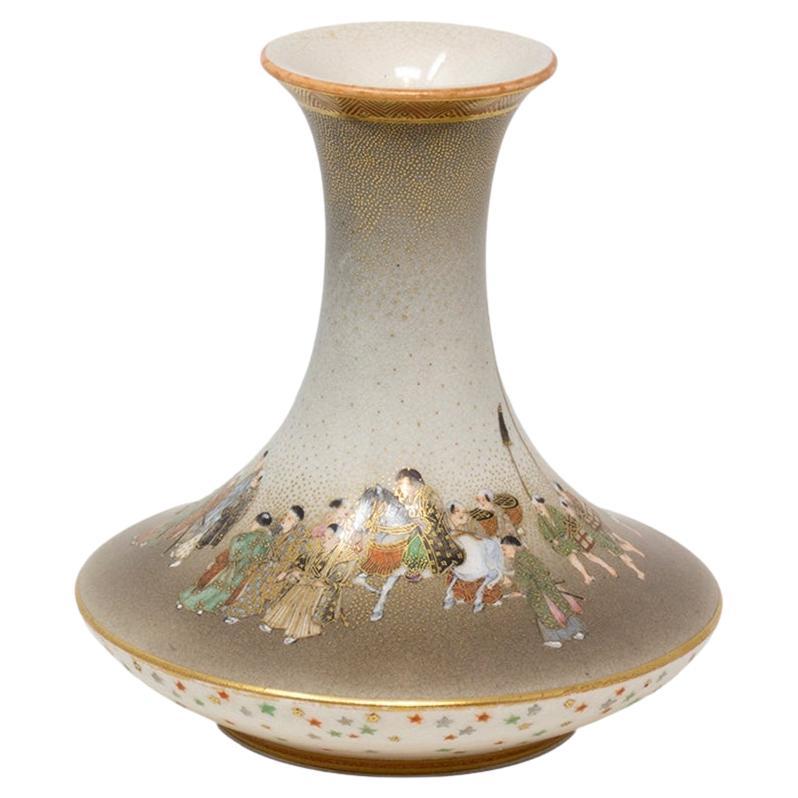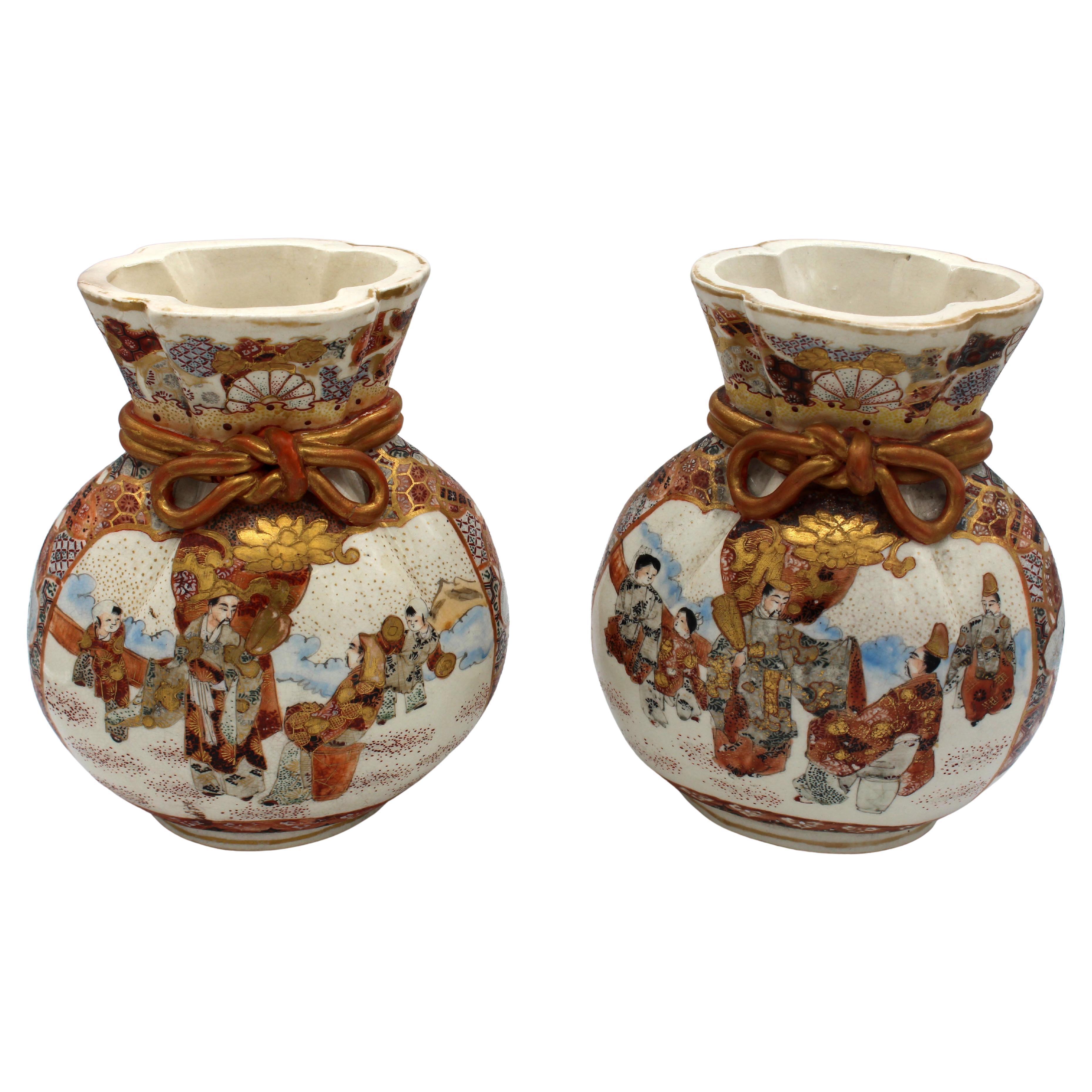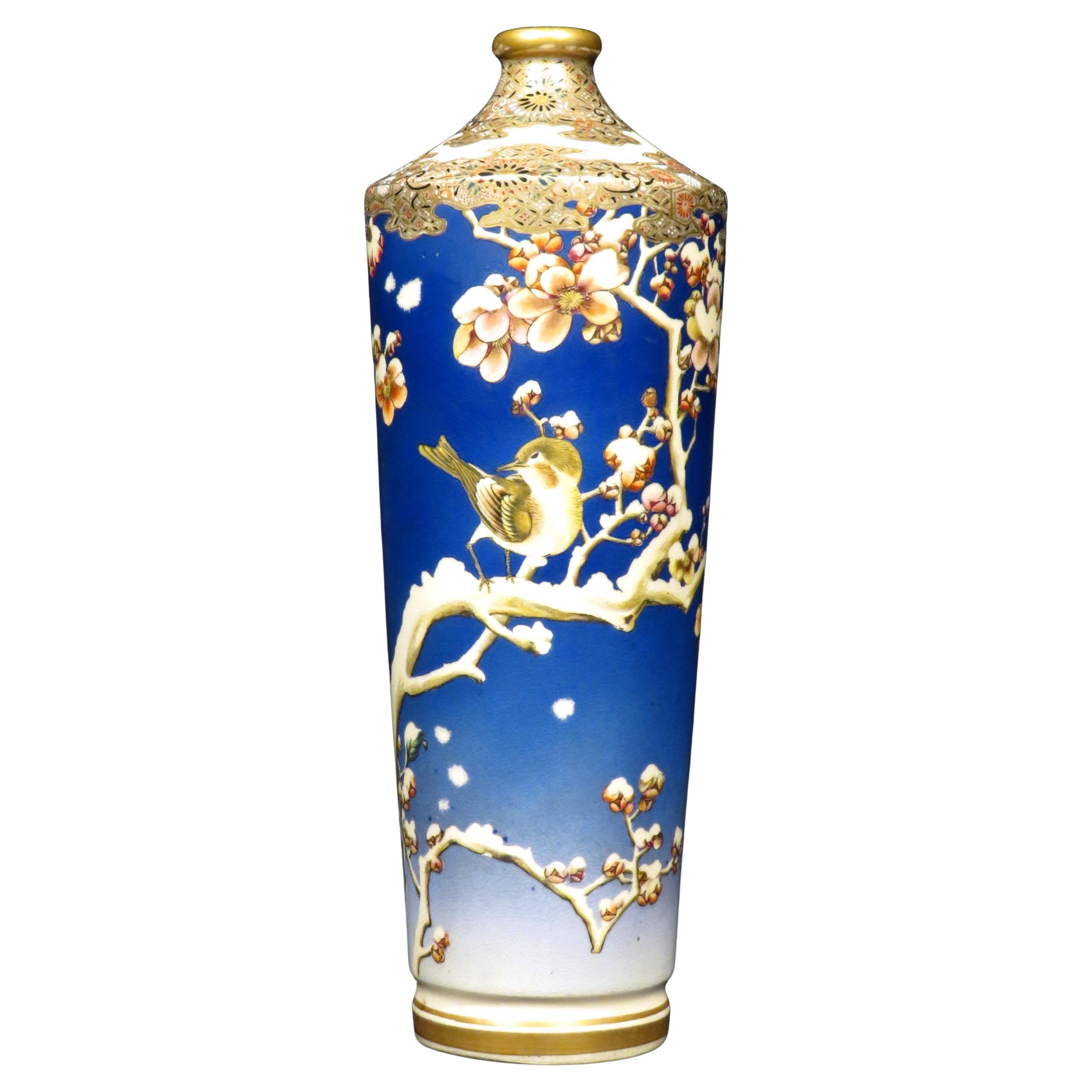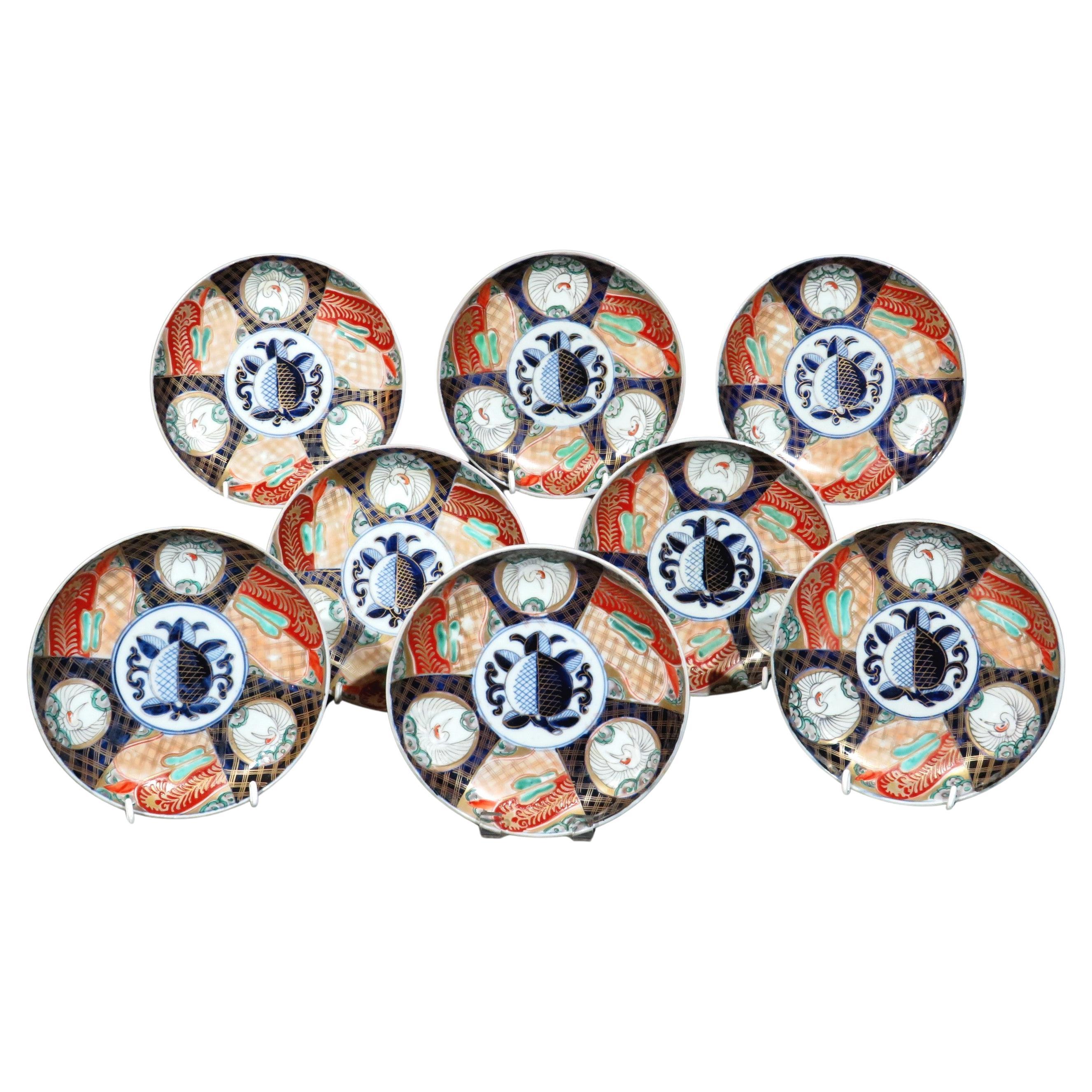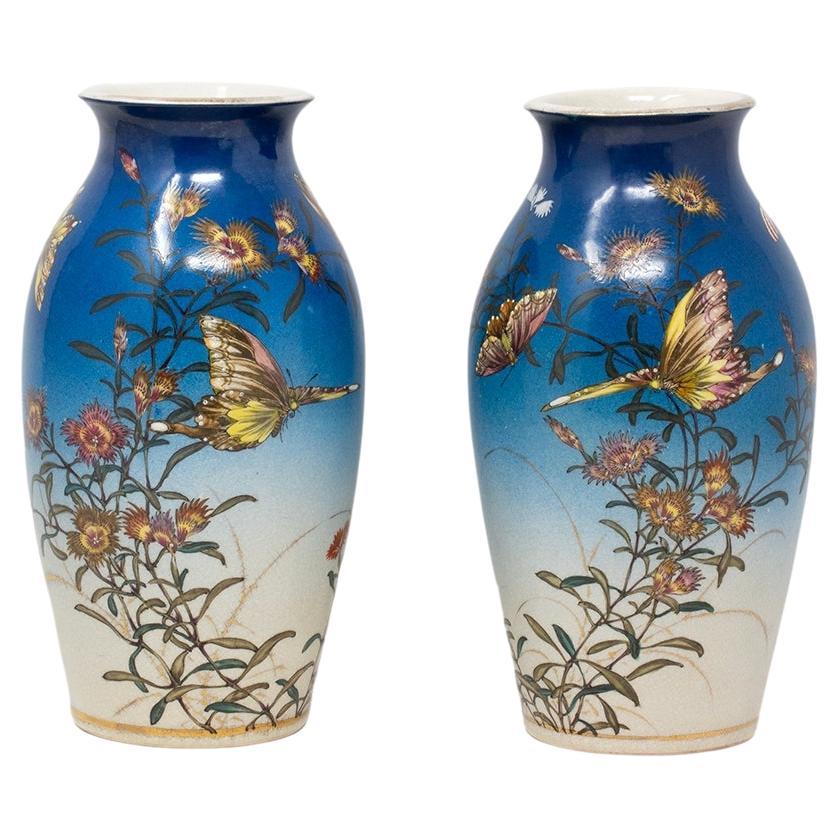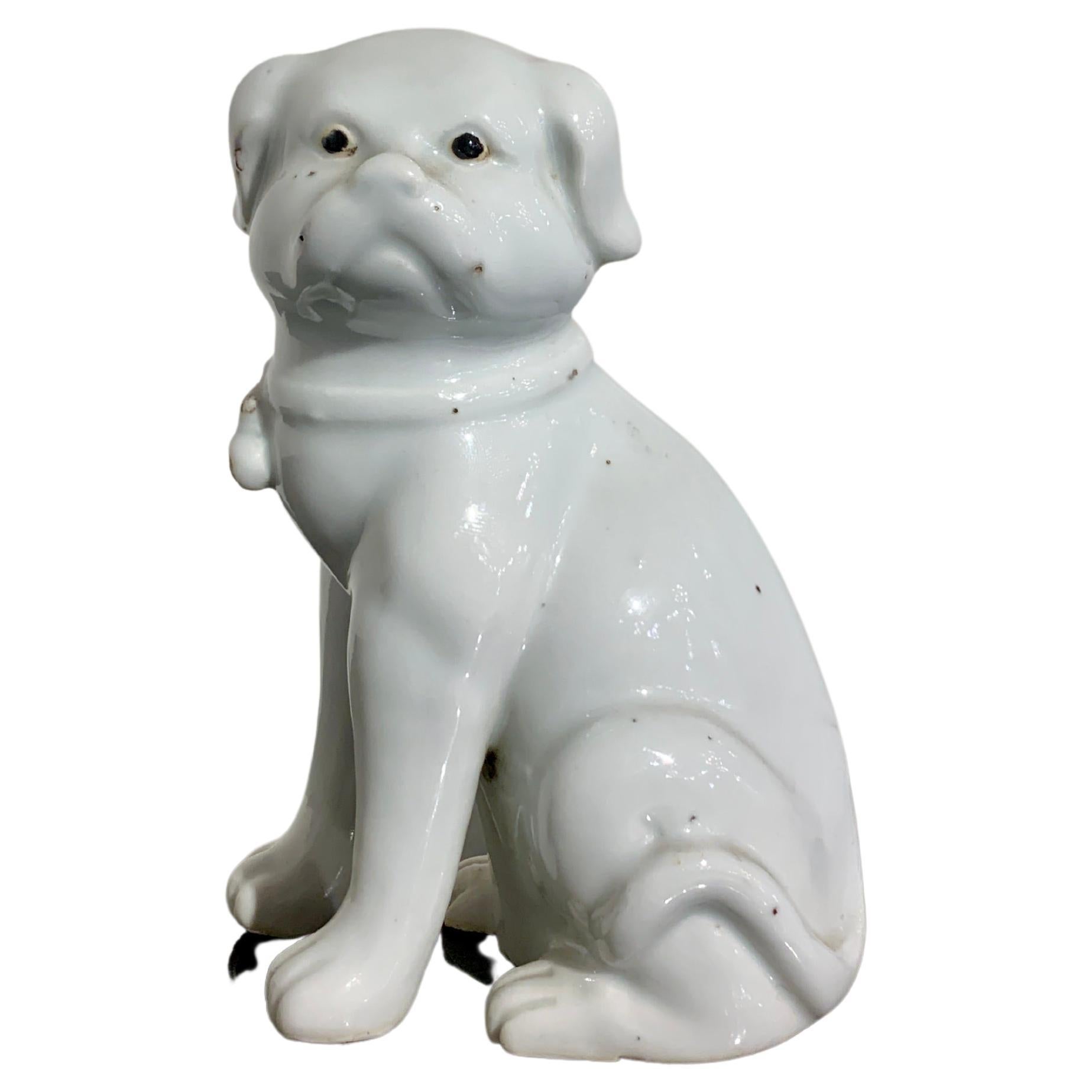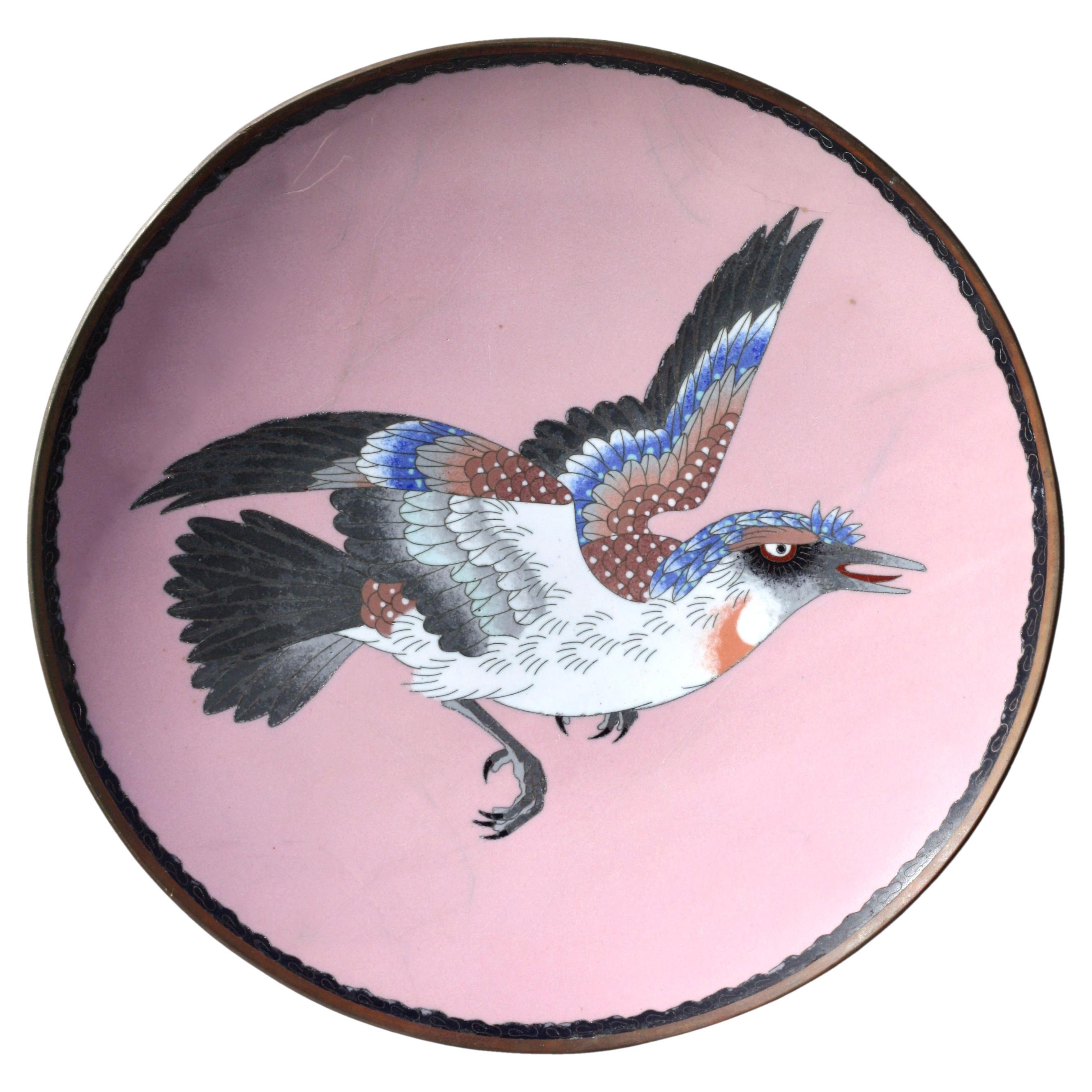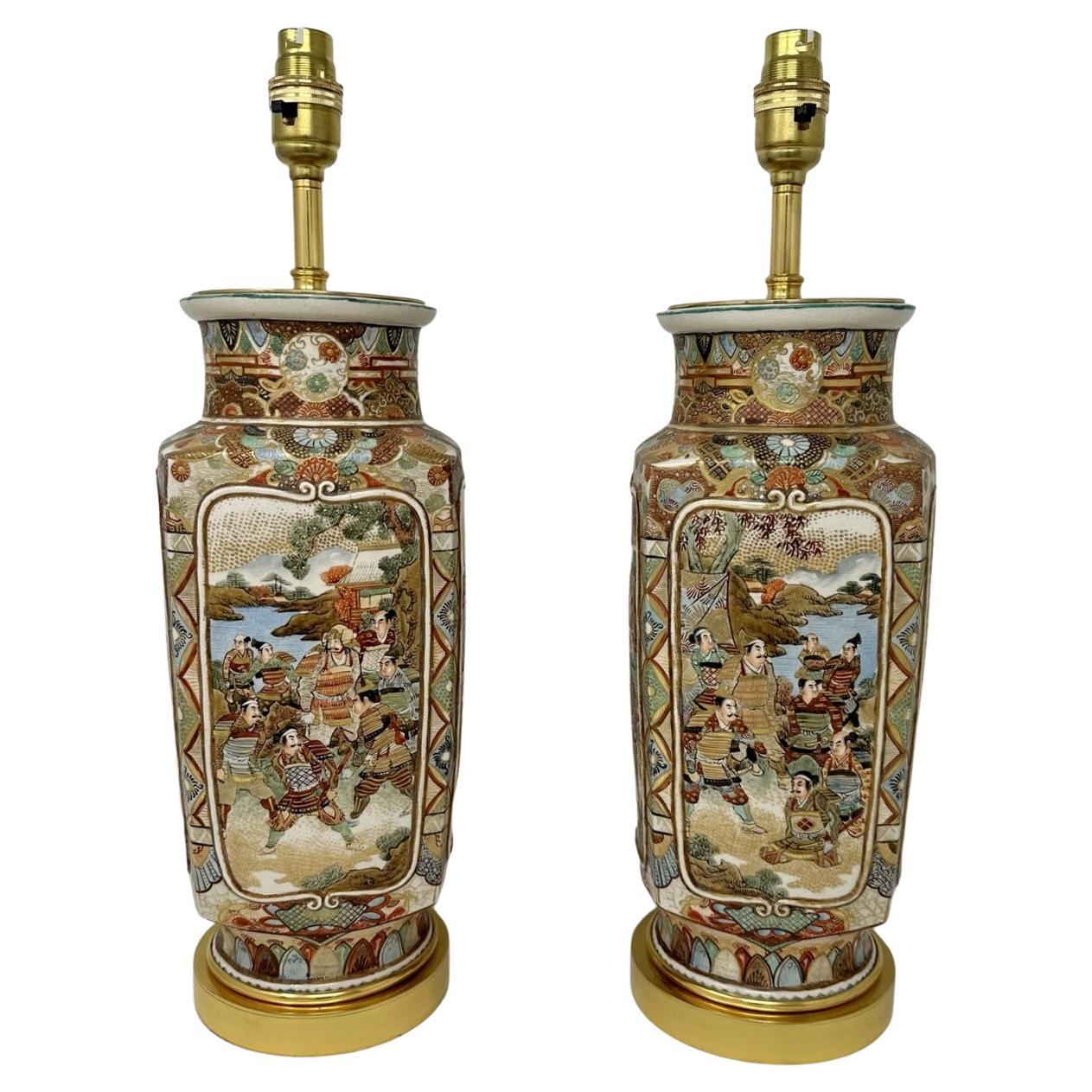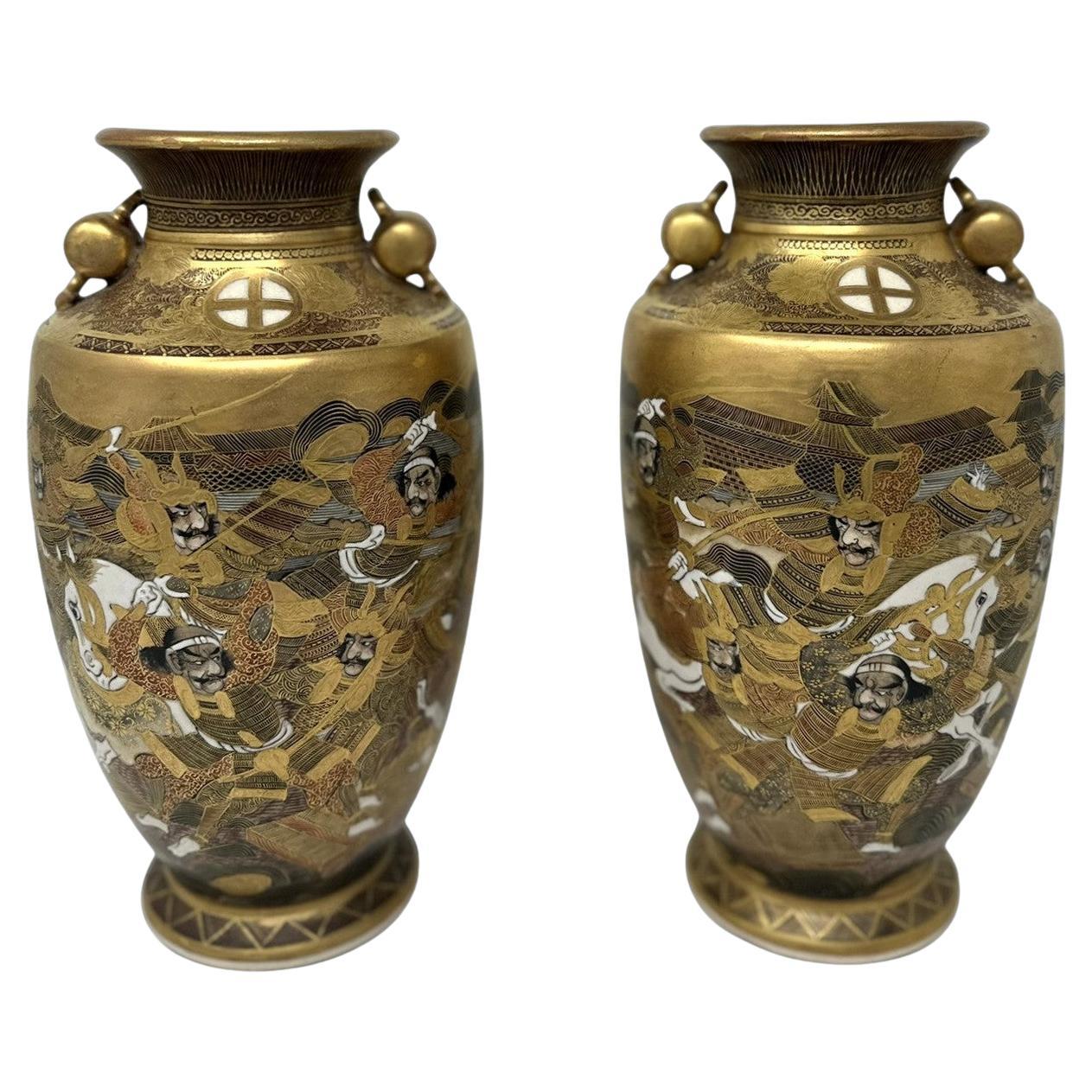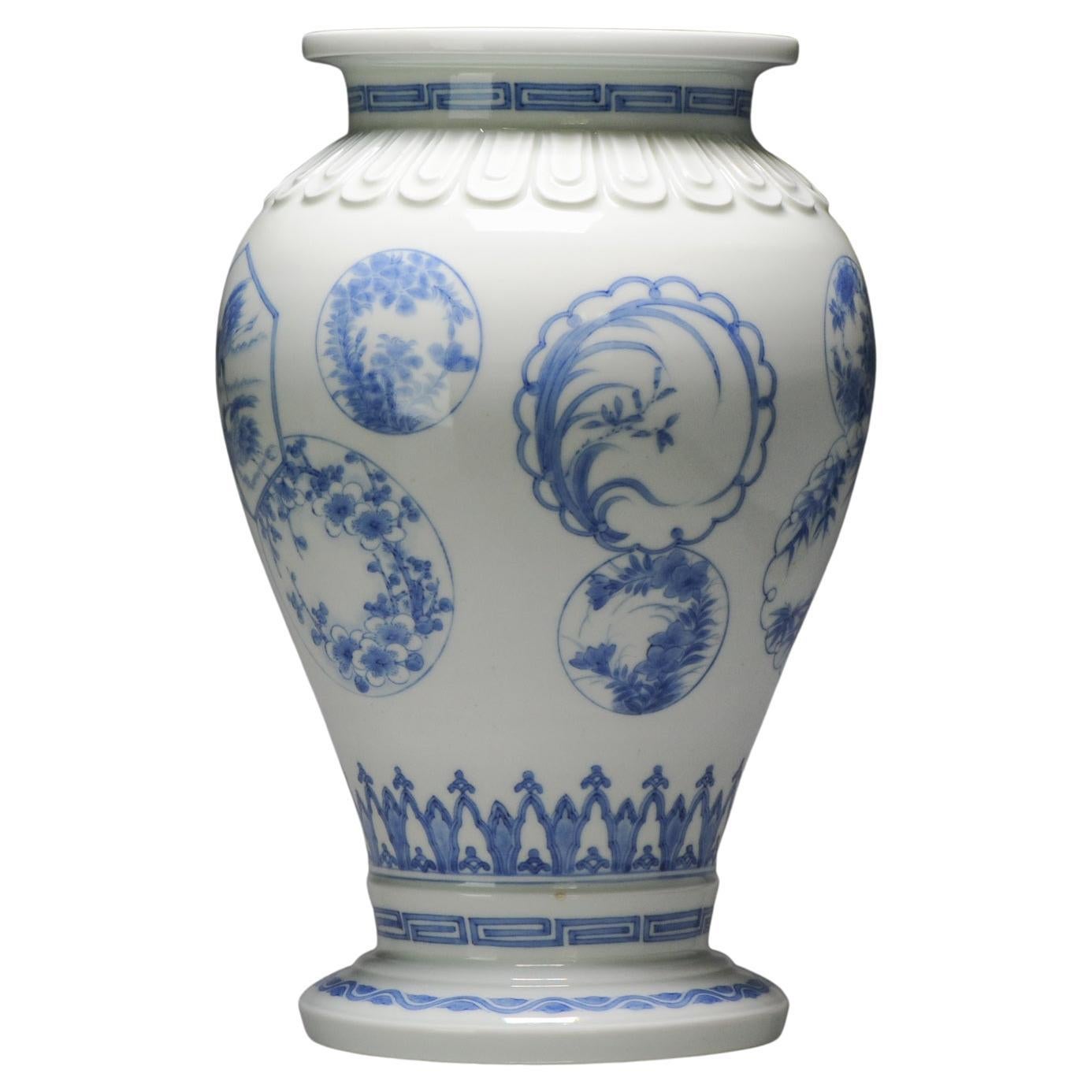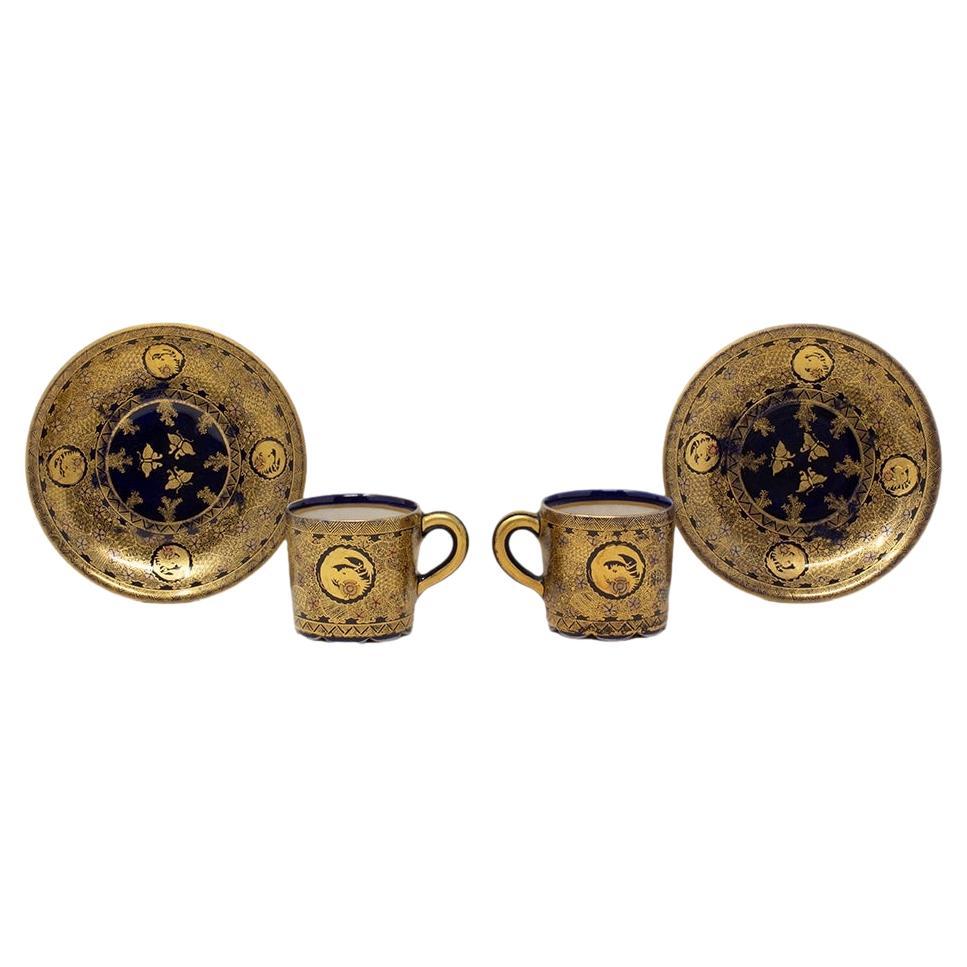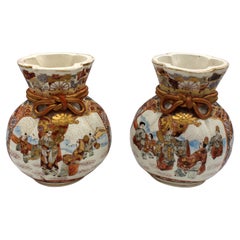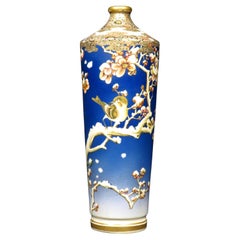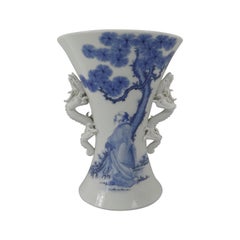
Hirado Porcelain Vase, Japanese, Meiji Period, 1868 -1912
View Similar Items
1 of 11
Hirado Porcelain Vase, Japanese, Meiji Period, 1868 -1912
About the Item
- Creator:Hirado (Manufacturer)
- Dimensions:Height: 9.53 in (24.2 cm)Width: 7.21 in (18.3 cm)Depth: 7.21 in (18.3 cm)
- Style:Meiji (Of the Period)
- Materials and Techniques:Porcelain,Fired
- Place of Origin:
- Period:
- Date of Manufacture:circa1870
- Condition:Wear consistent with age and use.
- Seller Location:Gargrave, GB
- Reference Number:1stDibs: LU4397118506712
Authenticity Guarantee
In the unlikely event there’s an issue with an item’s authenticity, contact us within 1 year for a full refund. DetailsMoney-Back Guarantee
If your item is not as described, is damaged in transit, or does not arrive, contact us within 7 days for a full refund. Details24-Hour Cancellation
You have a 24-hour grace period in which to reconsider your purchase, with no questions asked.Vetted Professional Sellers
Our world-class sellers must adhere to strict standards for service and quality, maintaining the integrity of our listings.Price-Match Guarantee
If you find that a seller listed the same item for a lower price elsewhere, we’ll match it.Trusted Global Delivery
Our best-in-class carrier network provides specialized shipping options worldwide, including custom delivery.You May Also Like
Japanese Meiji Period (1868-1912) Satsuma Vase by Kinkozan
By Kinkozan
Located in Newark, England
JAPANESE SATSUMA PROCESSIONAL VASE
From our Japanese collection, we are delighted to introduce to the market this Japanese Satsuma Vase by Kinkozan. The vase with a compressed body ...
Category
Antique Late 19th Century Japanese Meiji Ceramics
Materials
Ceramic, Earthenware, Pottery
1868-1912 Pair of Japanese Meiji Period Kyoto Satsuma Vases
Located in Chapel Hill, NC
1868-1912 Pair of Meiji Period Kyoto Satsuma Vases, Japan. In the form of tied sash bags/pouches. Four major reserve scenes in gardens. Fine gilding & ov...
Category
Antique Late 19th Century Japanese Meiji Ceramics
Materials
Pottery
A Very Fine Japanese Satsuma Cylinder Vase, Meiji Period (1868-1912)
By Kinkozan
Located in Ottawa, Ontario
The flaring cylindrical stoneware body richly decorated with hand painted enamels depicting songbirds perched upon flowering Sakura branches (cherry trees) set against a progressivel...
Category
Early 20th Century Japanese Meiji Ceramics
Materials
Enamel
Japanese Meiji Period (1868-1912) Satsuma Earthenware Vase Taizan for Hattori
Located in Newark, England
Meiji Period (1868-1912)
From our Japanese collection, we are delighted to offer Japanese Meiji Period Satsuma Vases. The Satsuma Vase of hexagonal form with a slight waisted neck and tight rounded rim is extensively decorated with multiple figures to two large scenes. The first scene features a beach with waves to the background and a plethora of figures including multiple geisha holding traditional Japanese wagasa’s. The second scene follows on from the first with a large building in the foreground holding figures on a large platform under a pagoda roof with a pagoda building in the background and further figures in the foreground. The scenes are framed by a full detailed border with gilt shapes, flowers amongst pink shaded backgrounds and butterflies around the neck. The Satsuma Vase is unusually signed Fine Art, Satsuma Ware, Dai Nippon (Great Japan), Hattori Made, Gosuido Works, Taizan Painted. 美術, サツマヤキ(薩摩焼), 大日本, 服部造, 五スイ堂工, 對山画 and dates to the Meiji Period (1868-1912) and the turn of the 20th century circa 1905.
Satsuma ware is a type of earthenware pottery originating from the Satsuma province in Southern Kyushu, Japan’s third largest island.
Wagasa are traditional Japanese umbrellas made of washi paper attached to a bamboo frame and treated to ensure it is waterproof.
Meiji Period was an era of Japanese history that spanned from 1868 to 1912. It was the first half of the Empire of Japan, when the Japanese people began to build a paradigm of a modern, industrialised nation state and emergent great power, influenced by Western countries and aesthetics. As a result of radically different ideas, the changes to Japan were profound and it affected the social structure, politics, economy, military, and foreign relations across the board. The period corresponded to the reign of Emperor Meiji and was preceded by the Keio era and was succeeded by the Taisho era.
Cultural Art during the Meiji Period was of particular interest to the government and they overhauled the art export market which in turn promoted Japanese arts via various world’s fairs, beginning in Vienna at the world fair in 1873. The government heavily funded the fairs and took an active role organising how Japan’s culture was presented to the world including creating a semi-public company named Kiritsu Kosho Kaisha (First Industrial Manufacturing Company). The Kiritsu Kosho Kaisha was used to promote and commercialise exports of Japanese art and established the Hakurankai Jimukyoku (Exhibition Bureau) to maintain quality standards. For the 1876 Centennial International Exhibition in Philadelphia, the Japanese government created a Centennial Office and sent a special envoy to secure space for the 30,000 items that would be displayed. The Imperial Household also took an active interest in arts and crafts, commissioning works by select artists to be given as gifts for foreign dignitaries further emphasising the high quality and importance of Japanese art. Just before the end of the 19th century in 1890, the Teishitsu Gigeiin (Artist to the Imperial Household) system was created to recognise distinguished artists. These artists were selected for their exceptionally high quality wares and talent in their own industry. Over a period of 54 years Seventy artists were appointed, amongst these were ceramicist Makuzu Kozan and cloisonné enamel artist...
Category
Antique Early 1900s Japanese Meiji Ceramics
Materials
Earthenware, Pottery
Eight 19th Century Japanese Imari Porcelain Dishes, Meiji Period (1868-1912)
By Arita
Located in Ottawa, Ontario
All richly decorated with hand painted enamels in a palette of cobalt, vermillion, green & & gilt, showing triangular panels of geometric designs interspersed by circular cartouches ...
Category
Antique Late 19th Century Japanese Meiji Ceramics
Materials
Enamel
Japanese White Glazed Hirado Ware Puppy, Edo/Meiji Period, Mid 19th Century
By Hirado
Located in Austin, TX
An absolutely adorable Japanese Hirado Mikawachi ware white glazed porcelain model of a puppy dog, Edo to Meiji period, early to mid 19th century, Japan.
The cute puppy is portray...
Category
Antique Mid-19th Century Japanese Meiji Sculptures and Carvings
Materials
Porcelain
Recently Viewed
View AllMore Ways To Browse
Mid Century Molded Chair
1960s Wrought Iron
Italy Marked Ceramics
French Gilt Swags
Mid Century Modern Dining Chairs Brass
19th Century Door Handles
Mid Century Japanese Ceramics
Murano Glass Table Lamps 1960
Rare Swedish Glass
Rare Murano Lamps
1950s Metal Desk
1950s Desk Lamps
Dining Room Horizontal Chandeliers
Italian Marble Base Table Lamp
Danish Key
Black Lacquer End Table
Mahal Rugs Blue
Trompe L Oeil Furniture
